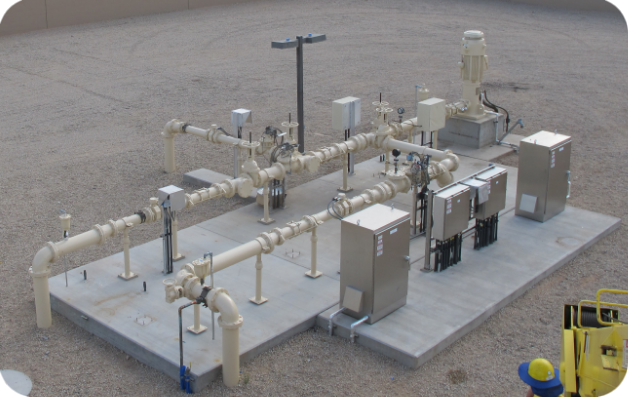Application: Aquifers, bore wells, dug wells, farms, reservoirs
Description: An injection (recharge) well is a device that places fluid deep underground into porous rock formations, such as sandstone or limestone, or into or below the shallow soil layer. Its flow is the reverse of a pumping well, but its construction should be the same. It is used to replenish groundwater resources when aquifers are located at greater depth and confined by materials of low permeability by directly discharging water into deep water-bearing zones. It can be cased with the material covering the aquifer. If this material is unconsolidated, a screen can be placed in the well in the zone of injection. It is particularly useful for aquifers with a long retention time; in areas where land is scarce; in areas where water and groundwater resources are heavily utilised; where acute problems with dropping watersheds, soil salinization or water scarcity are experiences; and for adding freshwater to coastal aquifers experiencing saltwater intrusion in coastal areas.
Contribution to climate resilience: Injection wells recharge groundwater reservoirs with surface water, thus making use of increased rainfall in the wet season and mitigating water shortages during the dry season. Making use of surface water also reduces runoff and erosion. This approach ensures that there is more water in the aquifer for use in the dry season, increasing communities’ resilience to drought that are likely to get worse with climate change.
Supplementary sources of information:
http://www.sswm.info/content/subsurface-groundwater-recharge
https://www.epa.gov/uic/aquifer-recharge-and-aquifer-storage-and-recovery
http://www.thealternative.in/lifestyle/recharge-wells-and-why-we-need-them/
Background image credit: https://flickr.com/photos/fakeera112/35547956454
This resilience-building measure is sourced from the Water Resource Adaptation Guide (2019) published by the National Council for Sustainable Development at the Ministry of Environment in Cambodia. The full Guide is available to download at URL https://ncsd.moe.gov.kh/sites/default/files/2019-10/Water%20Resources%20Adaptation%20Guide_March%202019_En.pdf


